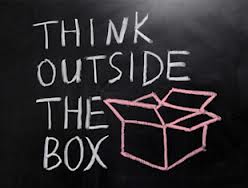 There is a lot in the literature connecting diversity and innovation. The theory goes that the more diverse the team the more innovative solutions they will develop. I posit that diversity in itself does not lead to better and more innovative solutions. However, inclusion, when working at its best does drive innovation.
There is a lot in the literature connecting diversity and innovation. The theory goes that the more diverse the team the more innovative solutions they will develop. I posit that diversity in itself does not lead to better and more innovative solutions. However, inclusion, when working at its best does drive innovation.
It takes effective and culturally competent leadership to spark innovation among teams. However, too often the diversity that inherently exists (every one brings a unique perspective; no two people have the exact same world view) within a group is explicitly or implicitly discouraged.
While most organizations today espouse innovation as the key to their success, these same organizations look for conformity and standardization. Here are several ways that this happens:
- People are typically hired based on a “good fit”. What does that really mean? They will not rock the boat, they are like “us”? If we truly want to spur different and new thinking, wouldn’t it make sense to hire people who are not just like us, who maybe do not look like us and do not come from our same worldview? This sounds risky for both the company and the potential hire. The new and “different” employee may face an uphill battle trying to bring in new ways of thinking and the company may just not be ready for too much difference.
- Teams are very rarely evaluated on the performance of the group. Even though the project may have been completed as a collaborative effort among a cross-functional group, for example, the year-end evaluation is based on individual performance. This provides a disincentive for the team to suppress their need for individual recognition and attend only to what is the best outcome for the team. Competition ensues and the outcomes are sub-optimized.
- The diverse skills that each team member brings may not be explicitly acknowledged at the outset of the project. Additionally the differences in personality, communication and conflict management styles may not be brought out, discussed and accepted. Team members may be judgmental about individual style differences, rather than trying to understand them and leverage them.
I liken inclusion to an orchestra. The conductor serving as the leader does not want the violin to conform to the behavior of the clarinet. The violin is there because of the unique sound that it brings. Granted, it will have to be “tuned” from time to time to ensure the best sound but we would not ask it to try to sound more like a clarinet.
We lose a lot of innovative potential in organizations because we force, albeit often unconsciously, people to try to change to behave in ways that do not recognize their unique capabilities. If we do not value the diversity, it will be impossible to move to inclusion where the potential for innovation lies.
Innovation will be optimized with leaders who are culturally competent and like an orchestra conductor know how to manage and leverage the unique talents that each person brings so that the result is far superior to that which could have been attained otherwise….like the melodic, synergistic sounds that a well lead orchestra makes.


















